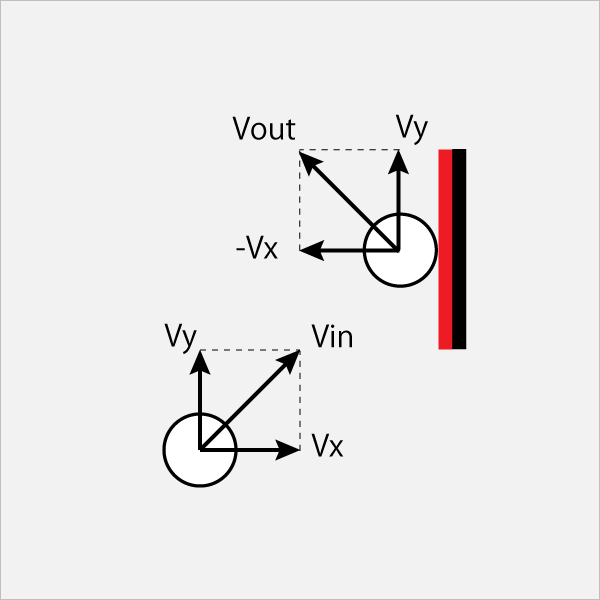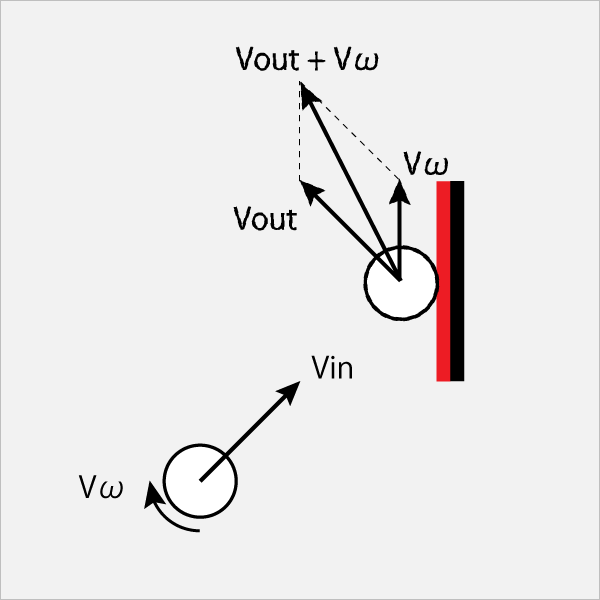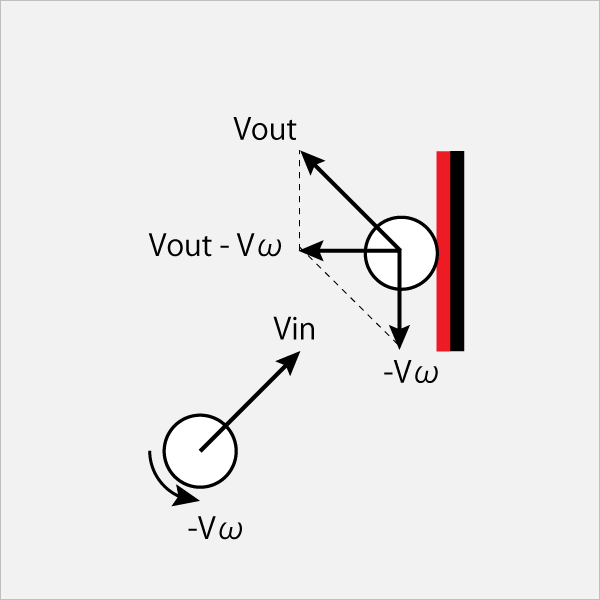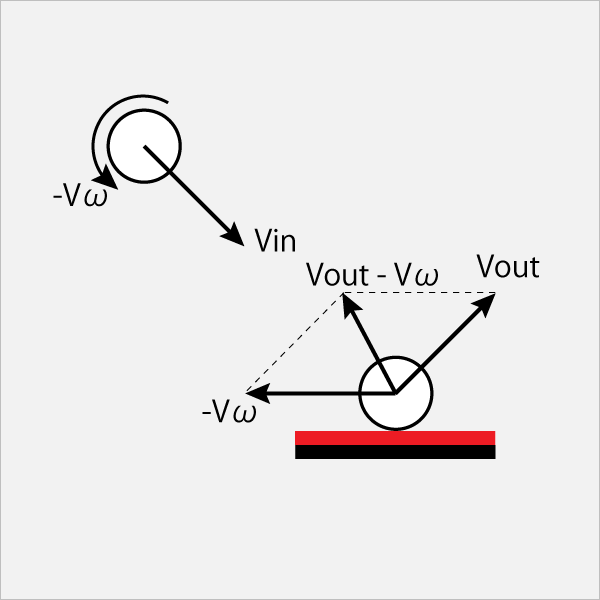1.5. Directions of Bouncing Ball
Dynamics has "The law of momentum conservation". Adapting it to table tennis and put it simply, the total remains constant even if the forms of a momentum have changed. According to this law, even if spin has changed to movement of a ball, the total of spin and flight momentum is constant.
In this section shows how the ball is bouncing, when the ball, of non-spin(Knuckle) or top-spin(Drive) or back-spin(Cut), hits by the stationary racket of inverted-rubber.
1.5.1. The Bouncing Direction of Knuckle
The next figure shows the bouncing direction when the ball with no spin hits the racket of stationary. Because the ball is coming up from below, this is image of a ball bouncing on the table.

When the ball hits by the racket, the ball flies to the direction of Vout, as a composition of the horizontal velocity -Vx and the vertical velocity Vy. The Vy dose not have anything to change the direction, while the Vx is redirected by the racket.
1.5.2. The Bouncing Direction of Drive Spin
The next figure shows the bouncing direction when the ball with drive spin hits the racket of stationary.

When the ball hits by the racket,the ball flies to the direction of Vout, as a composition of the horizontal velocity -Vx and the vertical velocity Vy. Up to this point is the same as the knuckle. But the ball receives spin reaction force from the rubber, since the ball is spinning of the ω. As a result, the spin ω is converted to the vertical velocity Vω, therefor the ball flies to the direction of Vout + Vω.
1.5.3. The Bouncing Direction of Cut Spin
The next figure shows the bouncing direction when the ball with cut spin hits the racket stationary.

When the ball hits by the racket,the ball flies to the direction of Vout, as a composition of the horizontal velocity -Vx and the vertical velocity Vy. Up to this is the same as the knuckle. But since the ball is spinning of the -ω, the ball receives spin reaction force from the racket rubber. As a result, the spin -ω is converted to the vertical velocity -Vω, therefor the ball flies to the direction of Vout - Vω.
1.5.4. Make a Return Using Backspin Force
The figure on the next shows the bouncing direction when the ball of cut spin has been lifted by the racket in horizontal.

When you firmly support the racket horizontally upwards, the ball stops the spin and returns to the direction that came to with composition speed Vout-Vω. I call this swing "juggling". I use in various situations in games.